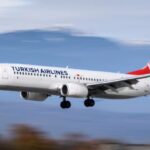At the Farnborough airshow this week, the Royal Air Force of the United Kingdom, made it’s first announcement and unveiled the first scale model of what has been dubbed the “Tempest” sixth generation fighter for the United Kingdom- due to take to the skies by 2035 in replacement for the Typhoon and Tornado-
The mockup of the Tempest, a true aerodynamic beast, was put together by a special RAF Group of Engineers known as “team tempest”
BAE Systems will contribute the advanced combat air systems and integration; Rolls-Royce will provide the advanced power and propulsion systems; Leonardo is responsible for advanced sensors, electronics and avionics and MBDA is in charge of the advanced weapons systems.
Upon climbing into the cockpit, the most remarkable point to note is there is no controls inside. The aircraft’s controls are fully virtual and self contained inside the HUD of the helmet worn by the pilot; This helmet interacts with both the pilot’s hand and eye movements and, having tried it out, it becomes apparent how easily this aircraft could be unmanned and remotely controlled as well as manned if the circumstances require it. However, a BAE trainer who demonstrated the aircrafts HUD stressed that, on many battle scenarios, human intuition is still essential.
The weaponry on the aircraft will include energy weapons that can fire concentrated bursts of laser, microwave or particle beams.
But perhaps the most eye-catching feature will be the ability to launch ‘swarming’ drones that can be launched and operated by the pilot; The idea behind this is to overwhelm any enemy’s air defence systems with so many incoming drones that it cannot cope.
App-like software will be able to enhance the aircraft’s capabilities over time so it evolves to keep ahead of changing combat conditions.
What is also truly remarkable about the technology is that it will be able to give the pilot cognitive feedback and also detect whether their alertness and responses are flagging.
The people working on this programme over the next decade are just as likely to be psychologists as physicists, engineers or IT specialists. It will also safeguard many thousands of skilled British jobs for at least the next two decades.
The Ministry of Defence has allocated £2bn towards its development costs but, given that the Typhoon cost £20bn to develop, this may prove to be a stretch to develop such a remarkable aircraft.
It was truly inspiring to see this model and to experiment with its technology, and the team here at Global Aviation Media shall be keeping a close eye and reporting on any developments!










